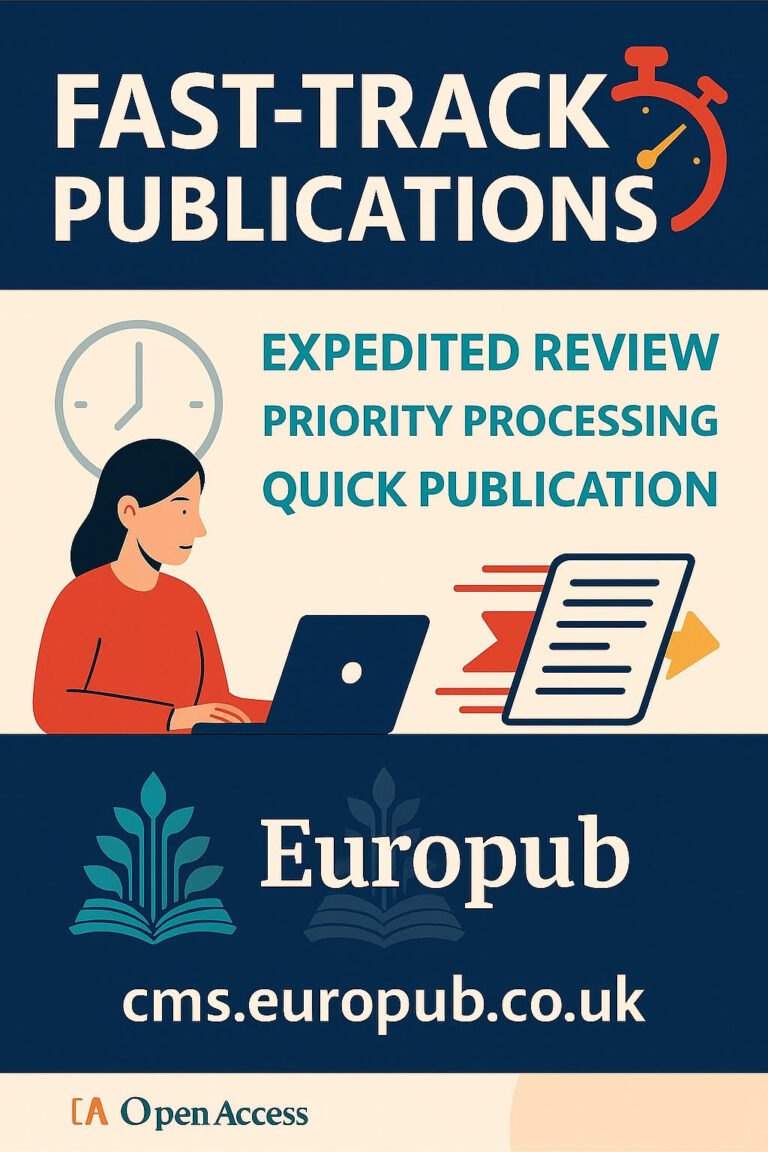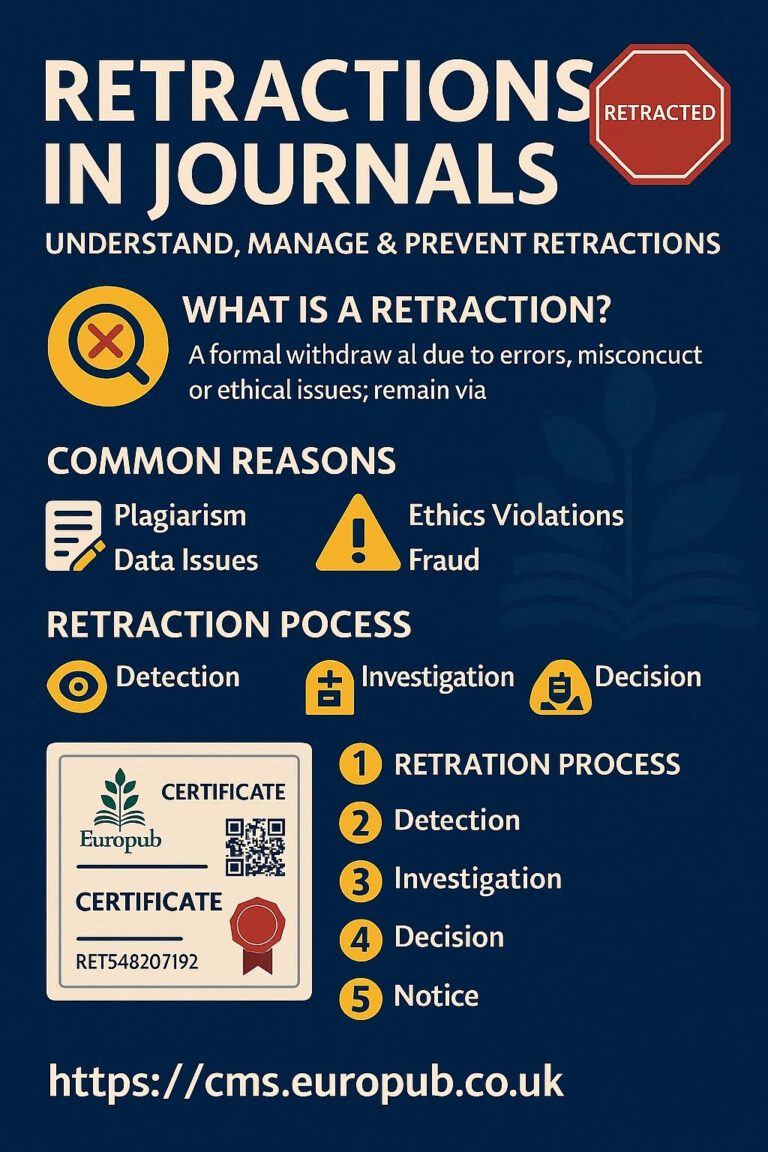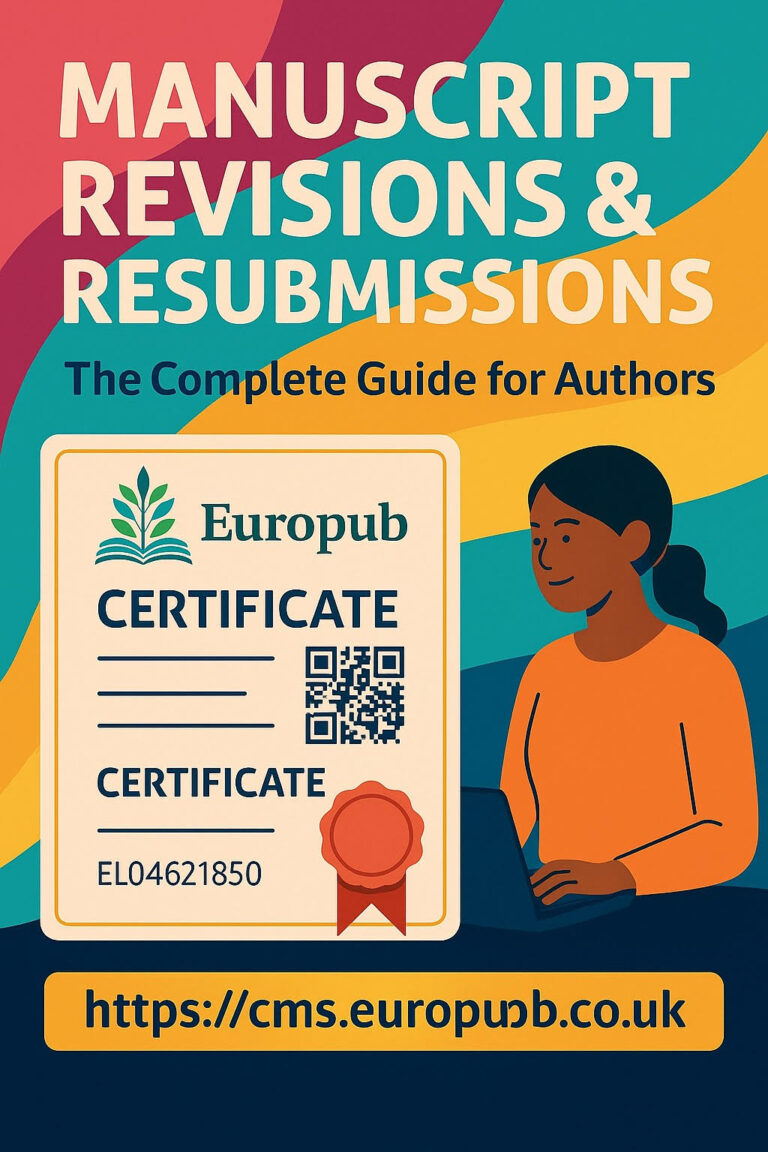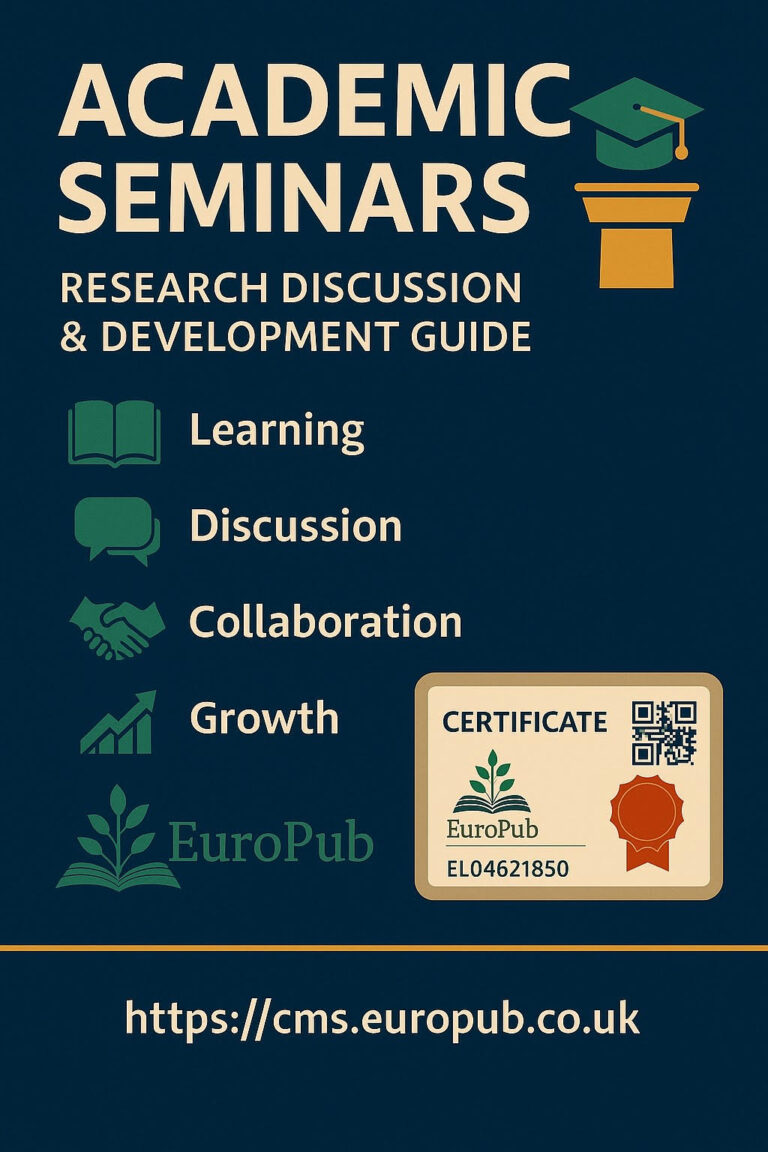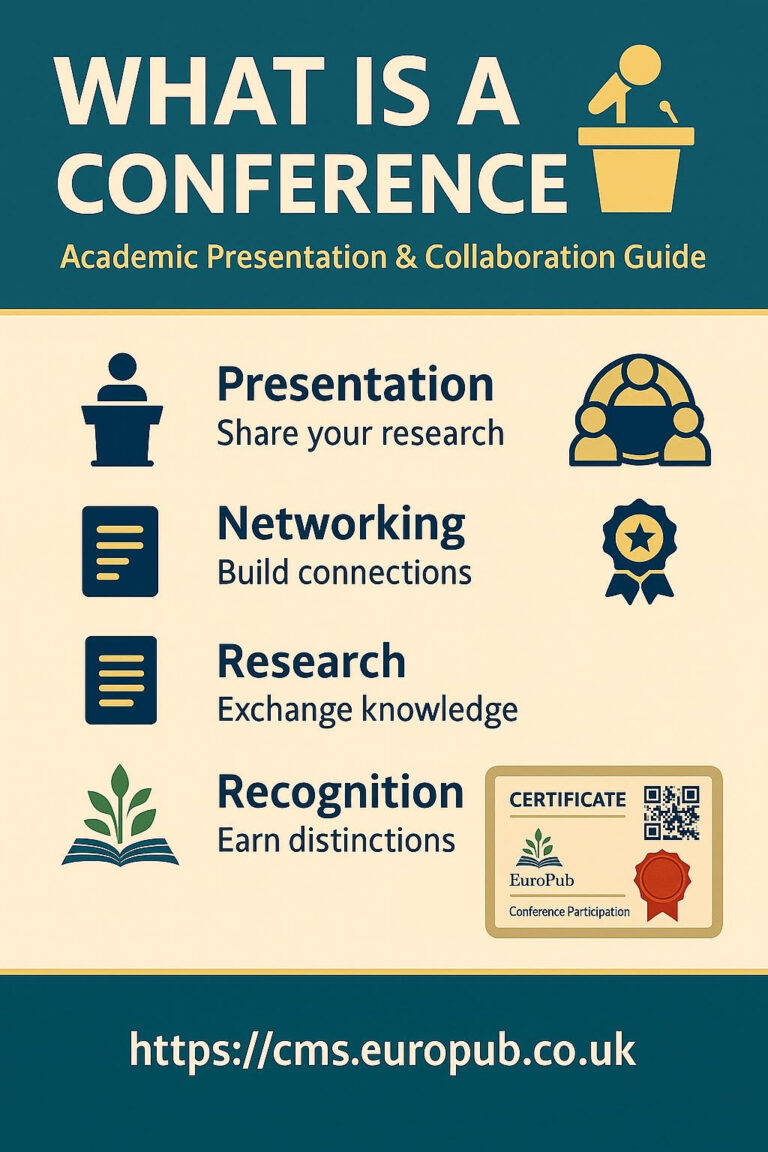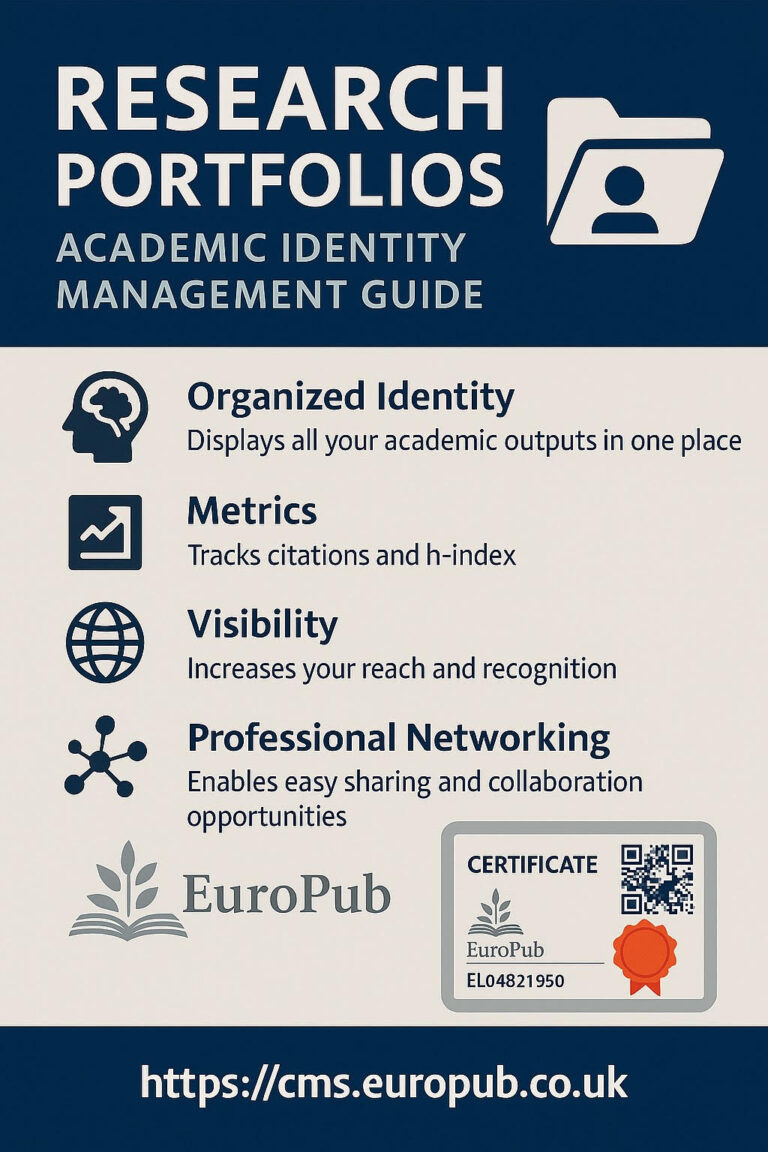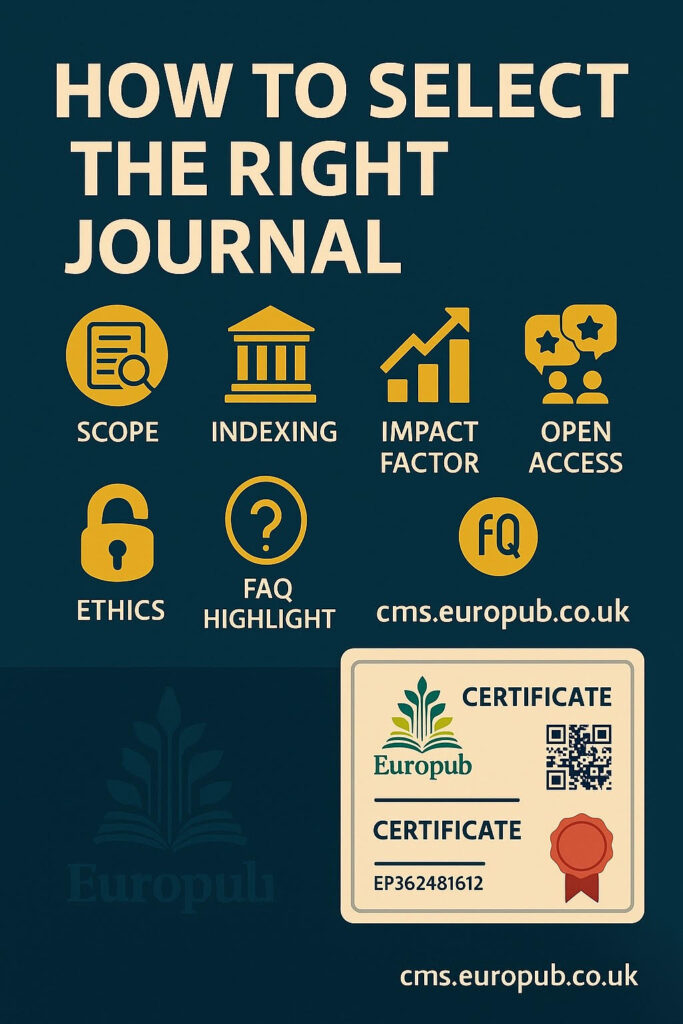
Choosing the right academic journal is one of the most important steps for researchers, as it determines the visibility, impact, and credibility of their work. Below is a complete guide with detailed explanations, step-by-step strategies, and extensive FAQs.
1. Key Factors to Consider
- Scope & Aim of the Journal
- Ensure the journal’s scope matches your article’s subject area.
- Check past issues to see if similar articles are published.
- Indexing & Abstracting
- Look for journals indexed in Scopus, Web of Science, PubMed, DOAJ, or ISI.
- Higher indexation → better visibility & credibility.
- Impact Factor & Quartile Ranking
- Use Journal Citation Reports (JCR) to check Impact Factor.
- Prefer journals in Q1 or Q2 (Quartile rankings).
- Peer Review Process
- Look for journals with double-blind or rigorous peer review for higher quality.
- Avoid journals with suspiciously fast acceptance.
- Open Access vs. Subscription
- Open Access → wider visibility, but may require APC (Article Processing Charges).
- Subscription → traditional but limited readership.
- Publication Timeline
- Check average review time, acceptance rate, and publication speed.
- Some journals offer “Fast Track” options.
- Editorial Board & Publisher Reputation
- Review the editorial board members.
- Established publishers (Springer, Elsevier, Wiley, Taylor & Francis, Sage, Nature, Europub, etc.) ensure credibility.
- Author Guidelines & Requirements
- Confirm formatting, word count, reference style (APA, MLA, Vancouver, etc.).
- Non-compliance may cause rejection before review.
- Ethical Standards
- Confirm if the journal follows COPE, ICMJE, or OASPA ethics guidelines.
- Beware of predatory journals (no peer review, false metrics).
2. Step-by-Step Selection Process
- Identify your research area.
- Shortlist journals indexed in Scopus / Web of Science.
- Compare Impact Factors, Quartiles, and Acceptance Rates.
- Review author guidelines carefully.
- Submit to the journal that balances prestige, relevance, and timeline.
3. Useful Tools & Websites
 Europub Database → https://europub.co.uk
Europub Database → https://europub.co.uk Certificate Management → https://cms.europub.co.uk
Certificate Management → https://cms.europub.co.uk Journal Citation Reports (JCR) → https://clarivate.com/products/journal-citation-reports
Journal Citation Reports (JCR) → https://clarivate.com/products/journal-citation-reports Elsevier Journal Finder → https://journalfinder.elsevier.com
Elsevier Journal Finder → https://journalfinder.elsevier.com Springer Journal Suggester → https://journalsuggester.springer.com
Springer Journal Suggester → https://journalsuggester.springer.com DOAJ → https://doaj.org
DOAJ → https://doaj.org
4. FAQ – Frequently Asked Questions
Q1. Should I always choose a high-impact factor journal?
A: Not always. High IF journals have low acceptance rates. Choose according to relevance, not only prestige.
Q2. What is better: Scopus-indexed or Web of Science-indexed?
A: Both are prestigious. WoS (especially SCI/SSCI) is stricter, but Scopus has broader coverage.
Q3. Are Open Access journals reliable?
A: Yes, if indexed in Scopus, WoS, or DOAJ. Avoid unindexed “pay-to-publish” journals.
Q4. How do I avoid predatory journals?
A: Check indexing, editorial board authenticity, and peer review policy. Use lists from COPE and DOAJ.
Q5. What quartile should I target?
A: Q1 is best, but Q2 journals are also very credible and often faster to publish.
Q6. Should I submit to multiple journals at the same time?
A: No. Simultaneous submissions are considered unethical.
Q7. How can Europub help?
A: Europub provides impact factor certificates, journal indexing, and validation services for researchers and editors. Certificates can be verified at: https://cms.europub.co.uk
Q8. How do I check if a journal is fake or predatory?
A: Search in Europub, Scopus, WoS, DOAJ, and check transparency of editorial board.
Q9. What happens if my article is rejected?
A: Review feedback, improve your manuscript, and resubmit to another suitable journal.
Q10. Do all publishers charge fees?
A: No. Subscription journals usually don’t charge authors but restrict access. Open Access journals usually have APCs.
 Promotional Note (for your website):
Promotional Note (for your website):
“Europub provides verified certificates and indexing services for journals worldwide. Over 200 journals trust Europub Certificates. Submit your request today at cms.europub.co.uk.”
